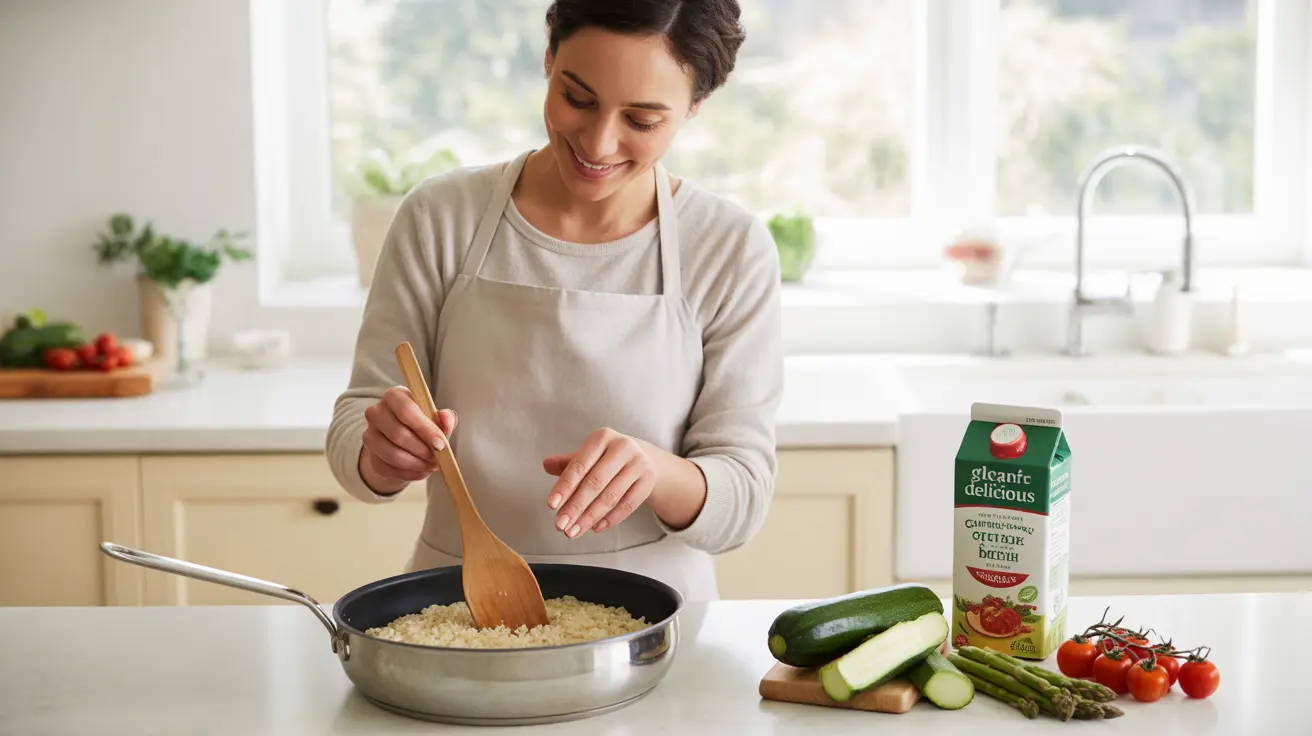For those following a gluten-free diet, whether due to celiac disease or gluten sensitivity, understanding which foods are safe to eat is crucial. Risotto, the creamy Italian rice dish, is a popular menu item that often raises questions about its gluten content. Let's explore whether risotto is naturally gluten-free and what factors you need to consider to enjoy it safely.
Understanding Traditional Risotto Ingredients
At its core, traditional risotto is made with naturally gluten-free ingredients. The main component, Arborio rice or other short-grain Italian rice varieties, contains no gluten. These special rice varieties are rich in starches that create risotto's characteristic creamy texture without the need for gluten-containing ingredients.
- Arborio, Carnaroli, or Vialone Nano rice
- Stock or broth
- White wine (optional)
- Onions and garlic
- Butter or olive oil
- Parmesan cheese
- Salt and pepper
Hidden Sources of Gluten in Risotto
While the basic ingredients of risotto are naturally gluten-free, several common additions and preparation methods can introduce gluten into the dish:
Stock and Broth Concerns
Commercial stocks and broths may contain gluten as a thickener or flavoring agent. Some bouillon cubes and stock bases include wheat-derived ingredients or may be produced in facilities that process gluten-containing products.
Cross-Contamination Risks
Even when using gluten-free ingredients, cross-contamination can occur during preparation, especially in restaurant kitchens where:
- Shared cooking utensils might have been used with gluten-containing foods
- The cooking surface may have traces of flour or pasta
- Ingredients may be stored near wheat products
Making Gluten-Free Risotto at Home
Creating safe, gluten-free risotto at home gives you complete control over ingredients and preparation methods. Here are essential steps to ensure your risotto remains gluten-free:
Selecting Safe Ingredients
Choose:
- Certified gluten-free broths and stocks
- Fresh, whole vegetables
- Pure herbs and spices
- Verified gluten-free wines
- Carefully checked cheese products
Kitchen Safety Measures
Maintain a gluten-free preparation environment by:
- Using dedicated cooking utensils
- Thoroughly cleaning all preparation surfaces
- Storing gluten-free ingredients separately
- Using fresh butter or oil to avoid contamination
Dining Out Safely
When ordering risotto at restaurants, take these precautions:
- Inform your server about your gluten sensitivity or celiac disease
- Ask about the type of stock used
- Inquire about the kitchen's cross-contamination prevention measures
- Request modification of any questionable ingredients or garnishes
Frequently Asked Questions
Does traditional risotto naturally contain gluten or is it gluten-free? Traditional risotto made with just rice, stock, wine, and cheese is naturally gluten-free. However, modifications to the classic recipe may introduce gluten-containing ingredients.
What ingredients in risotto could potentially add gluten and how can I avoid them? Commercial stocks, processed cheeses, and certain seasonings may contain hidden gluten. Choose certified gluten-free products and ask about all ingredients when dining out.
How can I ensure that homemade risotto is safe for a gluten-free diet? Use certified gluten-free ingredients, maintain a clean preparation area, and avoid cross-contamination with gluten-containing products in your kitchen.
Is it safe to eat risotto at restaurants if I have celiac disease or gluten sensitivity? Restaurant risotto carries cross-contamination risks. Always communicate your dietary needs clearly and verify ingredient safety with kitchen staff before ordering.
Can broths, cheeses, or processed meats used in risotto contain hidden gluten? Yes, these ingredients can contain hidden gluten. Commercial broths may use wheat-based thickeners, while processed meats and some cheese products might include gluten-containing additives or be processed in facilities that handle wheat products.




